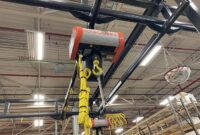Overview of Lab Grown Diamonds: Shop Lab Grown Diamond Rings Best Price Today #138

Lab grown diamonds, also known as synthetic or cultured diamonds, are created in a controlled environment using advanced technology that replicates the natural diamond formation process. This involves methods like High Pressure High Temperature (HPHT) and Chemical Vapor Deposition (CVD). Unlike natural diamonds, which can take billions of years to form deep within the Earth, lab grown diamonds are produced within weeks to months.
The benefits of choosing lab grown diamonds are numerous. Firstly, they are generally more affordable than natural diamonds, often costing 20-40% less. Additionally, they offer the same physical, chemical, and optical properties as natural diamonds. A significant advantage is their ethical sourcing; lab grown diamonds do not contribute to the negative impacts commonly associated with mined diamonds, such as environmental degradation and human rights abuses.
When comparing the environmental impact, lab grown diamonds significantly lessen the carbon footprint associated with their production. Mined diamonds contribute to land disruption, habitat loss, and pollution, whereas lab grown diamonds can be made using renewable energy sources, leading to a much smaller overall environmental impact.
Types of Lab Grown Diamond Rings
There is a diverse array of lab grown diamond rings available on the market, each catering to different tastes and preferences. Popular ring styles include solitaire, halo, and three-stone designs.
– Solitaire rings feature a single diamond, providing a classic and timeless look.
– Halo rings are characterized by a central diamond surrounded by a “halo” of smaller diamonds, enhancing the ring’s brilliance and size illusion.
– Three-stone rings symbolize the past, present, and future, often chosen for engagement settings.
Moreover, various settings such as prong, bezel, and pave are popular among consumers. Each setting can dramatically alter the overall appearance of the ring, making customization an appealing option for buyers.
Pricing of Lab Grown Diamond Rings
Several factors influence the pricing of lab grown diamond rings. These include the diamond’s size (carat weight), color, clarity, and cut quality. Additionally, the intricacy of the ring setting and brand reputation can also affect pricing.
To find the best prices on lab grown diamond rings, consider the following tips:
– Conduct thorough research online to compare prices across multiple retailers.
– Look for seasonal sales or promotions, which can provide significant discounts.
– Consider purchasing directly from manufacturers or authorized online retailers to eliminate middleman markups.
| Retailer | Ring Style | Price |
|---|---|---|
| Retailer A | Solitaire | $1,200 |
| Retailer B | Halo | $1,500 |
| Retailer C | Three-Stone | $1,800 |
Where to Buy Lab Grown Diamond Rings
For those looking to purchase lab grown diamond rings, there are several reputable online retailers to consider. Websites such as Brilliant Earth, James Allen, and MiaDonna offer a wide selection of styles and customization options.
In addition to online options, many local jewelry stores are beginning to specialize in lab grown diamonds. Visiting these stores provides the advantage of direct interaction and the opportunity to see the diamonds in person before making a decision.
When weighing purchasing options, buying from authorized dealers provides assurance of quality and authenticity, whereas independent retailers may offer unique selections and competitive pricing.
Customer Reviews and Experiences
Customer feedback regarding lab grown diamond rings online is generally positive, with many buyers highlighting the value and ethical aspects of their purchases. Testimonials often emphasize satisfaction with the quality and appearance of these diamonds, frequently noting that they are indistinguishable from natural diamonds.
Common praises include the affordability and ethical sourcing of lab grown diamonds, while concerns may center around perceived resale value. However, many customers feel that the ethical considerations and beauty of the rings far outweigh these concerns.
Care and Maintenance of Lab Grown Diamonds, Shop lab grown diamond rings best price today #138
Caring for lab grown diamond rings entails similar practices as with natural diamonds. Regular cleaning can be achieved using warm soapy water and a soft brush to maintain their brilliance.
For long-term maintenance, proper storage is vital. Rings should be stored in a soft pouch or a dedicated jewelry box to prevent scratches from other jewelry items.
A common myth is that lab grown diamonds are less durable than natural ones; however, both types share the same hardness and are equally resistant to scratching.
Trends in Lab Grown Diamond Jewelry
Current trends in lab grown diamond ring styles lean towards minimalism and personalization, with many opting for unique settings and custom design options.
Emerging consumer preferences include opting for colored lab grown diamonds, such as fancy yellow or pink, which add a distinctive flair to traditional engagement rings.
Looking ahead, the demand for lab grown diamond engagement rings is expected to increase, driven by a growing awareness of ethical sourcing and environmental concerns. As technology advances, the variety of styles and customization options will likely expand, furthering their popularity in the jewelry market.


